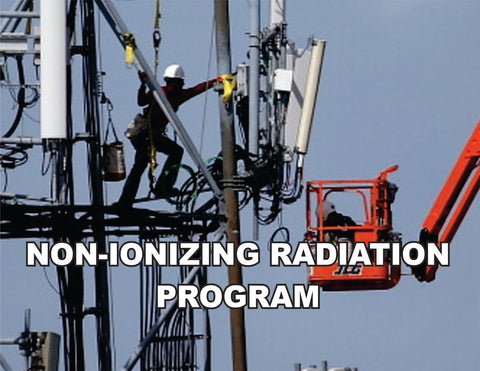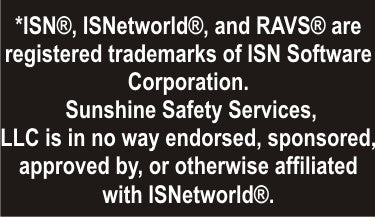Non-Ionizing Radiation Program - ISNetworld RAVS Section - US
$ 24.95
Non-Ionizing Radiation Program - ISNetworld RAVS Section - US
This Non-Ionizing Radiation Program (ISNetworld® RAVS®* Section), in addition to being a complete and functioning written safety program (chapter), it also contains all the required text elements that are sought by the ISNetworld RAVS® (Review And Verification Service) reviewer. This plan has been previously submitted and has achieved a 100% approval rating for our clients.
- All programs are guaranteed now and in the future to achieve 100% approval.
- There are NO maintenance or subscription fees.
- Simply notify us if any program falls out of compliance and we will correct it at NO CHARGE.
You are downloading a Microsoft® Word document file to your computer that is completely editable:
- Non-Ionizing Radiation Program:
- Approximate Word Count: 1,970
- Approximate Number of Pages: 6
- Page Reference Answers to RAVS Reviewer’s Questions: 4
You will also receive instructions for a simple two-step process to place your company name and safety person's name throughout this word document to conform it to your company. Please review, and feel free to alter or add to it as you wish with any specific company information or safety policies that you may already have.
The first two pages of the document are guidelines for conforming this safety manual section, an index for completing the RAVS® questionnaire (with all page references), and uploading the section.
If you experience any difficulty filling out the questionnaire, or have any questions in general about these documents, call 314-570-0072, or e-mail me at vsunshine1@gmail.com.
An excerpt from ISNetworld® RAVS®* Safety plan Non-Ionizing Radiation Program
Primary antennas for cellular and PCS transmissions are usually located outside on towers, water tanks and other elevated structures like rooftops and sides of buildings. The combination of antenna towers and associated electronic equipment is referred to as a "cellular or PCS cell site." Typical heights for cell site towers are 50-200 feet. Antennas are usually arranged in groups of three with one antenna in each group used to transmit signals to mobile units, and the other two antennas used to receive signals from mobile units.
At a cell site, the total RF power that could be transmitted from each transmitting antenna depends on the number of radio channels (transmitters) that have been authorized by the Federal Communications Commission (FCC) and the power of each transmitter. Although the FCC permits an effective radiated power (ERP) of up to 500 watts per channel (depending on the tower height), the majority of cellular sites in urban and suburban areas operate at an ERP of 100 watts per channel or less.
An ERP of 100 watts corresponds to an actual radiated power of 5-10 watts, depending on the type of antenna used. In urban areas, an ERP of 10 watts per channel or less is commonly used. For PCS cell sites, even lower radiated power levels are normally used. As with all forms of electromagnetic energy, the power density from a cellular or PCS transmitter rapidly decreases as one moves away from the antenna. Consequently, normal ground-level exposure is much less than the exposure that might be encountered if one were very close to the antenna and in its main transmitted beam. Measurements made near typical cellular and PCS cell sites have shown that ground-level power densities are well below limits recommended by RF/microwave safety standards used by the FCC.





